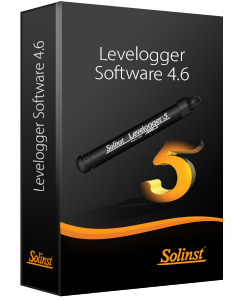 Why Use a Barologger?
Why Use a Barologger?
Submersed absolute Leveloggers measure total pressure (water column equivalent + barometric pressure). In order to accurately determine the true changes in water level only, barometric pressure fluctuations must be removed from the data. The simplest method to accomplish this is by the use of a Barologger suspended above high water level in one well on site. The approximate site compensation coverage is 20 miles (30 km). This records ambient barometric fluctuations over time and allows quick and accurate barometric compensation using the data files from both the Barologger and any Leveloggers in the area.
Manual Barometric Compensation
If an on-site Barologger is not available, your data can be compensated using alternate barometric data (e.g. from a local weather station).
To accomplish an accurate manual barometric compensation, the atmospheric pressure station should not be greater than 20 miles (30 km) away and within an elevation change of 1000 ft (300 m). In addition, the date and time of the barometric data should cover the range of data collected by the Levelogger.
To begin manual compensation, your Levelogger data and barometric data must be in the same units, and assure that any offsets or normalization values are accounted for. Previous Levelogger and Barologger models (e.g. Gold) produce data with an offset of 31.17 ft or 9.5 m (lowest expected pressure at mean sea level) removed from the level values. Levelogger Edge data does not contain this offset. Although not shown in our examples, it is also important to remember that weather station barometric data will often contain a different offset or normalization. Manual data conversation and barometric compensation should account for any variation of the normalization or offset used between the barometric data sourced and Solinst Leveloggers.
| Pressure Conversion Factors | ||
|---|---|---|
| Barometric Unit | FOOT Water Column Equivalent | METER Water Column Equivalen |
| 1 psi | 2.30666 | 0.703070 |
| 1 kPa | 0.334553 | 0.101972 |
| 1 mbar | 0.0334553 | 0.0101972 |
Water Column Equivalents to Common Barometric Units
Examples:
- Conversion from psi to feet of water column equivalent: Example: 15 psi (for Levelogger Edge):
15 psi x 2.30666 ft/psi = 34.60 ft head - Conversion from kPa to meters of water column equivalent: Example: 101.40 kPa (for older Levelogger):
101.4 kPa x 0.101972 m/kPa = 10.34 m - 9.50 m offset = 0.84 m head
* Values in red denote pressure conversion factors; consult the table above to obtain common pressure conversions
Once the final calculated barometric pressure values are obtained, they are subtracted from the Levelogger data set. Since the Levelogger data can be easily exported as a .csv or .xml file using Levelogger Software, all manual corrections can be performed in external programs.
In an example where the uncompensated Levelogger Edge data is a water level of 41.17 ft, from the calculation above, the manual compensation would be: 41.17 ft – 34.60 = 6.57 ft.
In an example where the uncompensated older Levelogger data is a water level of 3 m, from the calculation above, the manual compensation would be: 3 m – 0.84 = 2.16 m.
Note:
The Levelogger Edge can be programmed to record in kPa, psi, or mbar. This makes compensation using other atmospheric pressure devices easier.




